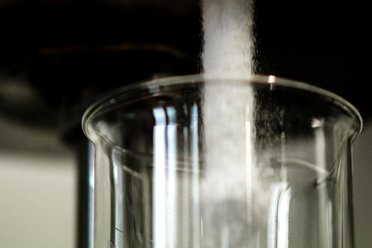 Powders are fine, dry particles that are created by grinding, crushing or the disintegration of a solid substance. These particles can flow freely when they’re shaken or their container is tilted. There are two types: Granular and Fine. Granular materials are more particulate and individual grains are larger in size than fine powders. Finer grain sizes tend to clump or form lumps while flowing.
Powders are fine, dry particles that are created by grinding, crushing or the disintegration of a solid substance. These particles can flow freely when they’re shaken or their container is tilted. There are two types: Granular and Fine. Granular materials are more particulate and individual grains are larger in size than fine powders. Finer grain sizes tend to clump or form lumps while flowing.
Properties of Powders
Examples of manufactured powders include flours, cosmetics, talcum powder, sugar, powdered coffee, gunpowder, photocopying machine toner. Volcanic ash, dust, sand, dry snow etc is all natural powders.
Common properties of powders include:
- Ability to be compacted or loosened
- Light and fluffy when sprinkled
- Dense and static when vibrated or compressed
- Ability for segregation, jamming, unjamming, loss of kinetic energy, frictional shearing, compaction etc.
- Supports shear stress unlike liquids
Powders: Uses and Issues
Powders are used extensively in the pharmaceutical, cosmetic and food industries, apart from many others. This has resulted in the need for precise measurement and ensuring the smooth, uninterrupted and controllable flow of powders. As a result, flow instruments, flow measurement devices and powder flow tester have become a necessary part of any industry that used powder handling equipment.
The main issue with powders is that they don’t flow reliably and consistently from bins, containers, hoppers, feeding machines, packaging machines, dosers, silos etc. This causes production issues, uneven quality etc and can even cause plant shutdown, leading to loss of revenue. Variations in mixtures, packaging and quality can result in the company’s losing clients.
Powder flow instruments
Flowability testers generally fall into two categories: Dynamic and Static Assessment equipments. Dynamic testers measure the powder as it flows or is about to flow , while static testers measure the flowability at rest or if the powder has been compressed. Both types of testers are required to give a comprehensive picture of powder behavior.
These instruments measure flow function, wall friction, bulk density, etc.
There are different options available, based on the brand, function and company that manufactures them. Optional accessories include temperature probes, humidity sensors, sieve kits, real time clock display, choice of flow function tests, data output options etc.
Powder handling equipments include powder rheometer and sensor systems that provide different types of data based on your needs. Texture analyzers are used for batch and source variation, addition of lubricants, processing conditions etc. Sophisticated computer controlled equipments include acoustic envelope detectors, dough inflation units etc. Such instruments help to present consistent samples under identical, controlled conditions.
All these equipments ensure that flowability problems are detected/analyzed/corrected well ahead before they cause production breakdowns.
Read Also About angle of repose apparatus.